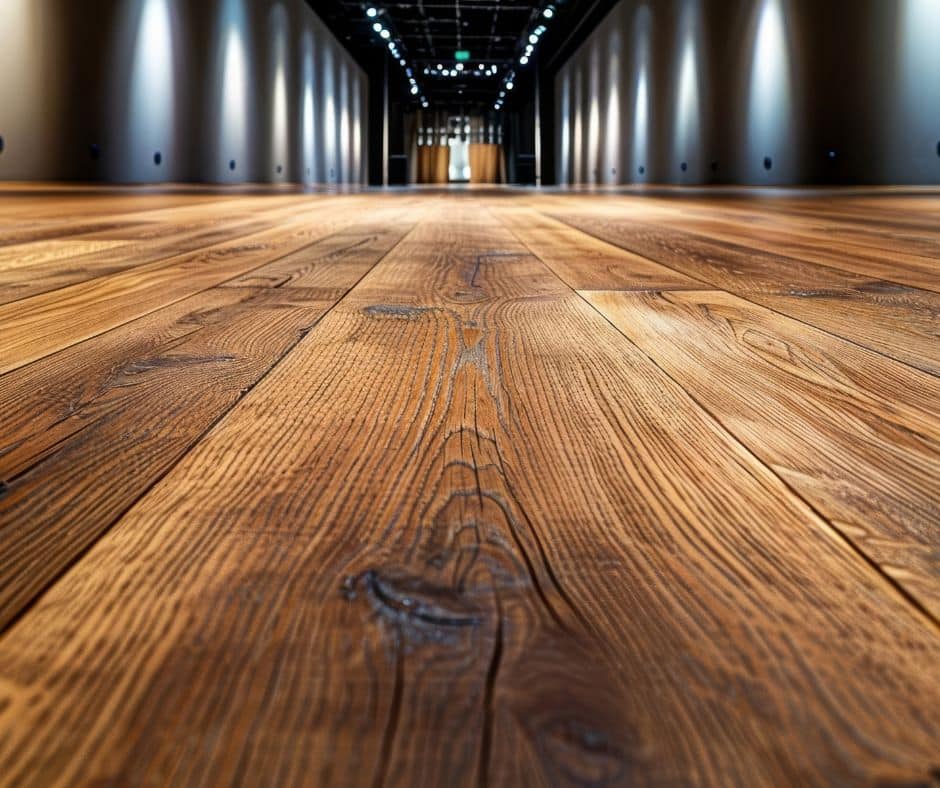When it comes to hardwood floors, there’s no shortage of options. Species, finish, width, stain—every choice adds a layer of personality to your space. But one feature that often gets overlooked (and really shouldn’t) is board length.
Long-length hardwood flooring, sometimes called long boards or extended planks, offers a unique visual appeal and some distinct advantages. But is it the right fit for your project?
Here’s a closer look at the pros and cons of long-length hardwood flooring so you can make the best choice for your home or business.
What Is Long-Length Hardwood Flooring?
Standard hardwood planks are usually between 12 and 48 inches long. Long-length planks stretch much further—often between 6 to 12 feet or more, depending on the manufacturer and wood species. These extended boards are commonly found in wide plank collections and are especially popular in open, modern, or rustic spaces.
They’re not just about looks, either. The length of your flooring boards can impact everything from installation time to the overall feel of a room.
The Pros of Long-Length Hardwood Flooring
Seamless, Spacious Look
Fewer seams mean a more continuous, streamlined appearance. Long boards can visually elongate a room, making spaces feel larger and more open, especially in wide, open floor plans.
Less Pattern Disruption
With fewer joints and cuts, long-length flooring showcases more of the natural grain, knots, and color variation in the wood. This gives you a cleaner, more elegant look, perfect for design-forward interiors.
Faster Installation (Sometimes)
Fewer boards can mean fewer cuts and less handling during installation. That said, because long boards are heavier and harder to maneuver, it’s important for the installer to be experienced and familiar with the material.
Adds Value and Luxury Appeal
Long, wide planks are often seen as a high-end choice. Choosing this style can boost your home’s perceived value and aesthetic, especially when paired with quality hardwood like oak, walnut, or hickory.
The Cons of Long-Length Hardwood Flooring
Higher Cost
Longer boards are more expensive than standard-length planks. This is due to the extra care required in sourcing, milling, and handling longer pieces of wood. If you’re working with a tight budget, this is something to factor in early on.
More Waste (Depending on Layout)
If your room isn’t the right size or shape, you may end up with more off-cuts or waste during installation. Proper planning and professional measurements can help reduce this, but it’s still something to consider.
More Challenging to Transport & Store
Long planks require extra care during delivery and storage to prevent warping. If your project site has tight staircases or small doorways, it may be tricky getting these planks into place.
Not Ideal for Every Room
In smaller rooms or irregular-shaped spaces, long boards can feel overwhelming or tricky to work with. You may want to reserve them for larger, more open areas where they really shine.
Is Long-Length Hardwood Flooring Right for You?
Go for long planks if:
- You’re installing flooring in a large or open-plan area
- You want a seamless, high-end look with fewer visible joints
- You’re ready to invest in a premium product for lasting beauty
Stick to standard lengths if:
- You’re renovating a small or uniquely shaped room
- You’re working within a tight budget
- You prefer a more traditional, varied floor layout
Make Your Flooring Stand Out
Long-length hardwood flooring is a standout choice for homeowners who want bold beauty and a refined, contemporary feel. Yes, it comes with a few challenges, but when planned and installed properly, it can completely transform your space. That said, so can many options of wide plank flooring.
Thinking about upgrading to long-length hardwood? Consult with our team! We can help determine if your space, and your subfloor, are up for the task.
Need help picking the perfect floor? We’re always happy to talk options and help you find the best fit for your home, lifestyle, and budget.
